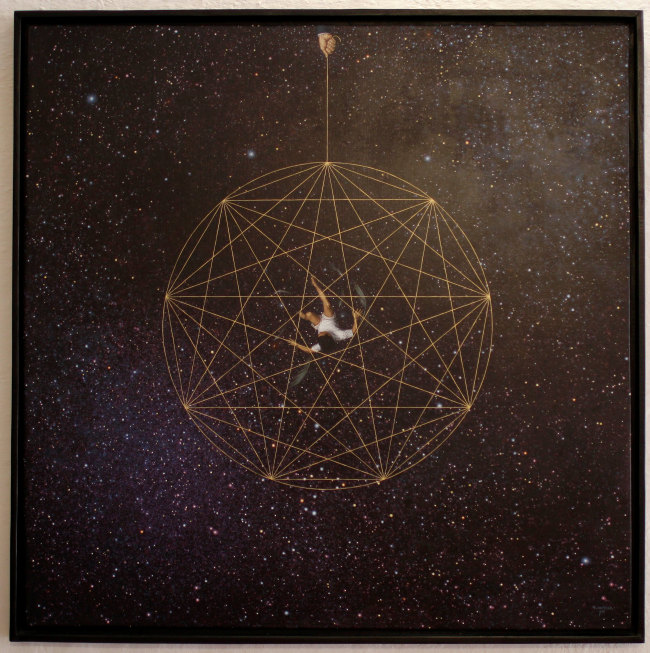HAVANA (AP) ― Ruben Alpizar never met the American collector who fell in love with his painting of a plummeting Icarus against a starry background, hanging on the wall of a Spanish colonial-era fortress across the bay from Havana. Nor did he get a name or a hometown, or even learn whether the buyer was a man or a woman.
It all happened quickly, starting with a phone call from a broker. “How much for the painting? Look, I think somebody wants it. I’ll call you right back.’’ Soon after, the phone rang again: “Sold.’’
“We need more people coming from Gringoland,’’ Alpizar said with a smile, not a hint of derision in his voice as he employed a term that can be either affectionate or pejorative depending on the context. “They pay the price you ask.’’
 |
The painting titled “Home” by Cuban artist Ruben Alpizar hangs in San Carlos de La Cabana fortress as part of the 11th annual Havana Biennial exhibition in Havana, Cuba, on Friday. (AP-Yonhap News) |
The streets of the Cuban capital are, in fact, awash with American art pilgrims during the monthlong Biennial, a showcase connecting local contemporary artists with well-heeled foreign collectors ― key clients in a country whose citizens have little real purchasing power.
Alpizar, for one, would not say how much his painting sold for, but offered that his work normally goes for between $3,000 and $15,000, a windfall in a country where most people earn the equivalent of $20 a month.
The Americans are arriving in larger numbers because of the Obama administration’s relaxation of U.S. embargo travel rules. They say they see a chance to explore the unknown and look for the ultimate conversation piece to hang on the living room wall.
“I think there is a mystique and the association with the ‘time-capsule island’ and all that’s inaccessible,’’ said Rachel Weingeist, an adviser to Shelley and Donald Rubin on their Cuban art collection. The couple’s New York-based Rubin Foundation promotes the arts and humanitarian causes.
“Frankly we haven’t had much access until recently,’’ Weingeist said.
The Americans say they’re impressed by the island’s sophisticated fine arts scene compared to those in other countries in the Caribbean and elsewhere. Auctions by Christie’s and Sotheby’s have firmly cemented Cuban art in the U.S. consciousness, such as this week’s sale of a painting by the late surrealist Wilfredo Lam for $4.56 million.
“There’s so much heart. It’s very intense. It’s about a sense of place,’’ said Jennifer Jacobs of Portland, Oregon, who led a private group of 15 collectors from Seattle to the Biennial. “It really spoke to me personally.’’
Terry Hall, an art collector and accountant from Gurnee, Illinois, just south of the Wisconsin border, said she was surprised by the variety she saw.








![[Weekender] Korea's traditional sauce culture gains global recognition](http://res.heraldm.com/phpwas/restmb_idxmake.php?idx=644&simg=/content/image/2024/11/21/20241121050153_0.jpg)